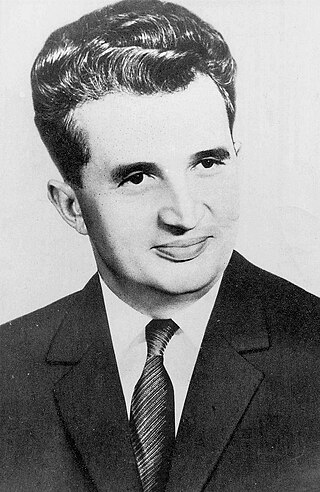
Nicolae Ceaușescu was a Romanian communist politician and dictator. He was the general secretary of the Romanian Communist Party from 1965 to 1989, and the second and last Communist leader of Romania. He was also the country's head of state from 1967, serving as President of the State Council and from 1974 concurrently as President of the Republic, until his overthrow and execution in the Romanian Revolution in December 1989, part of a series of anti-Communist uprisings in Eastern Europe that year.
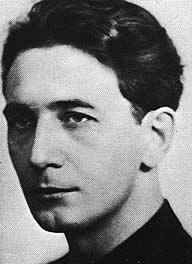
Horia Sima was a Romanian fascist politician, best known as the second and last leader of the fascist paramilitary movement known as the Iron Guard. Sima was also the vice president of the council of ministers and de facto co-leader in Ion Antonescu's National Legionary State. Sima had previously served briefly as State Secretary of Education under Gheorghe Tătărescu in 1940, and as a short-lived Minister of Religion and Arts in the government of Ion Gigurtu.

Cercetașii României is the primary national Scouting organization of Romania. Founded in 1913, it became a member of the World Organization of the Scout Movement (WOSM) in 1993.
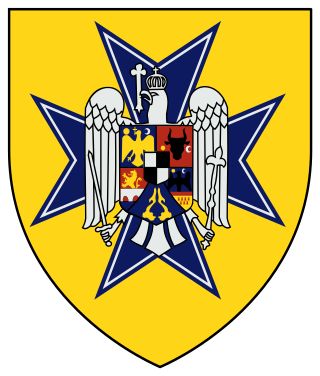
Straja Țării was a youth organization in the Kingdom of Romania, created in 1935 by King Carol II to counter the growing influence the Iron Guard had over the youth of Romania. Its members were known as străjeri ("sentinels"), and used a form of the Roman salute as greeting.

Conducător was the title used officially by Romanian dictator Ion Antonescu during World War II, also occasionally used in official discourse to refer to Carol II and Nicolae Ceaușescu.

Grigore Preoteasa was a Romanian communist activist, journalist and politician, who served as Communist Romania's Minister of Foreign Affairs between October 4, 1955, and the time of his death.

Miron Constantinescu was a Romanian communist politician, a leading member of the Romanian Communist Party, as well as a Marxist sociologist, historian, academic, and journalist. Initially close to Communist Romania's leader Gheorghe Gheorghiu-Dej, he became increasingly critical of the latter's Stalinist policies during the 1950s, and was sidelined together with Iosif Chișinevschi. Reinstated under Nicolae Ceauşescu, he became a member of the Romanian Academy.
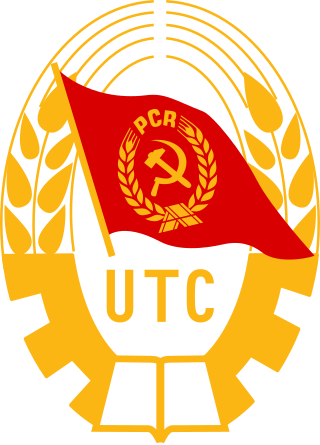
The Union of Communist Youth was the Romanian Communist Party's youth organisation. Like many Young Communist organisations, it was modelled after the Soviet Komsomol. It aimed to cultivate young cadres into the party, as well as to help create the "new man" envisioned by communist ideologues.

The July Theses is a name commonly given to a speech delivered by Romanian leader Nicolae Ceaușescu on July 6, 1971, before the Executive Committee of the Romanian Communist Party (PCR). Its full name was Propuneri de măsuri pentru îmbunătățirea activității politico-ideologice, de educare marxist-leninistă a membrilor de partid, a tuturor oamenilor muncii. This quasi-Maoist speech marked the beginning of a "mini cultural revolution" in the Socialist Republic of Romania, launching a Neo-Stalinist offensive against cultural autonomy, a return to the strict guidelines of socialist realism and attacks on non-compliant intellectuals. Strict ideological conformity in the humanities and social sciences was demanded. Competence and aesthetics were to be replaced by ideology; professionals were to be replaced by agitators; and culture was once again to become an instrument for communist propaganda.

The National Renaissance Front was a Romanian political party created by King Carol II in 1938 as the single monopoly party of government following his decision to ban all other political parties and suspend the 1923 Constitution, and the passing of the 1938 Constitution of Romania. It was the party of Prime Ministers Armand Călinescu, Gheorghe Argeșanu, Constantin Argetoianu, Gheorghe Tătărescu, and Ion Gigurtu, whose regimes were associated with corporatism and antisemitism. Largely reflecting Carol's own political choices, the FRN was the last of several attempts to counter the popularity of the fascist and antisemitic Iron Guard. In mid-1940, Carol reorganized the FRN into the more radical Party of the Nation, designed as a "totalitarian unity party". The party's anthem was "Pe-al nostru steag e scris Unire". It effectively ceased to function the following year when the Parliament of Romania was dissolved.

The Pioneer Organization was a pioneer movement in Communist Romania, founded on April 30, 1949.
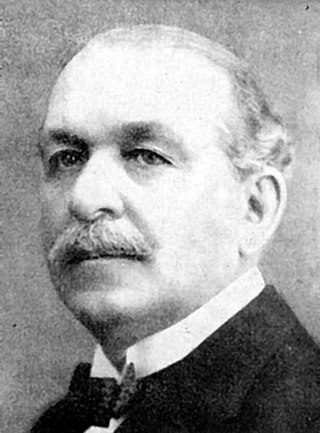
Stelian Popescu was a nationalist Romanian journalist.
Justin Georgescu was a Romanian communist activist and anti-fascist militant assassinated in police custody during World War II.
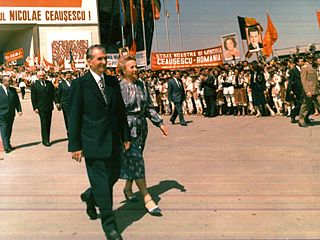
During the Cold War, Romanian dictator Nicolae Ceaușescu presided over the most pervasive cult of personality within the Eastern Bloc. Inspired by the personality cult surrounding Kim Il-sung in North Korea, it started with the 1971 July Theses which reversed the liberalization of the 1960s, imposed a strict nationalist ideology, established Stalinist totalitarianism and a return to socialist realism. Initially, the cult of personality was just focused on Ceaușescu himself. By the early 1980s, however, his wife, Elena Ceaușescu—one of the few spouses of a Communist leader to become a power in her own right—was also a focus of the cult.

National communism in Romania is a term referring to a form of nationalism promoted in the Socialist Republic of Romania between the early 1960s and 1989; the term itself was not used by the Communist regime. Having its origins in Gheorghe Gheorghiu-Dej's political emancipation from the Soviet Union, it was greatly developed by Nicolae Ceaușescu, who began in 1971, through his July Theses manifesto, a national cultural revolution. Part of the national mythology was Nicolae Ceaușescu's cult of personality and the idealization of Romanian history, known in Romanian historiography as protochronism.

Cenaclul Flacăra was a cultural and artistic movement in the Socialist Republic of Romania led by poet Adrian Păunescu. Between 1973 and 1985, it organized shows and concerts which, although rebellious in comparison to the official entertainment, promoted Nicolae Ceaușescu's cult of personality and the ideology of National Communism.
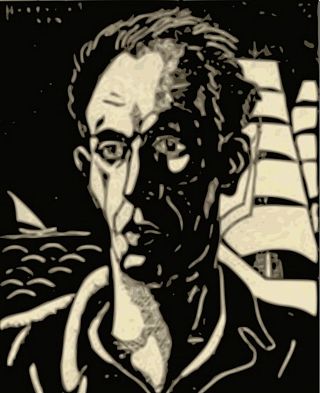
Alexandru Bassarab, or Basarab, was a Romanian painter, engraver, and fascist politician. Earning his reputation for his pioneering work in linocut and woodcut, he explored neotraditionalism, Romanian nationalism, and Romanian folklore, and was ultimately drawn into politics with the Iron Guard. He helped steer several art groups associated or integrated with the Guard, contributed to its fascist propaganda, and briefly served in the Assembly of Deputies. He survived the clampdown of the late 1930s, returning to apolitical work with Grupul Grafic, and exploring the legacy of Byzantine art.
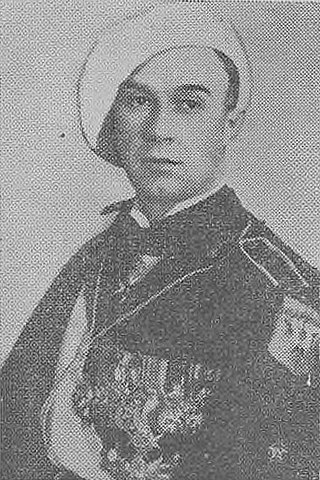
General Teofil Gh. Sidorovici was one of the commanders of the Straja Țării (Watchmen), a paramilitary youth organization in the Kingdom of Romania, created in 1935, and Minister of National Propaganda in the sixth Gheorghe Tătărescu cabinet, after the resignation of Constantin C. Giurescu.

Liberation Day, officially known as the Liberation from Fascist Occupation Day was observed on 23 August in Communist Romania to celebrate the 1944 Romanian coup d'état, the event that caused Romania to leave the Axis in World War II and marked the beginning of the Soviet occupation of Romania. It coincides with the European Day of Remembrance for Victims of Stalinism and Nazism.

Petre Constantinescu-Iași was a Romanian historian, academic and communist politician.

















